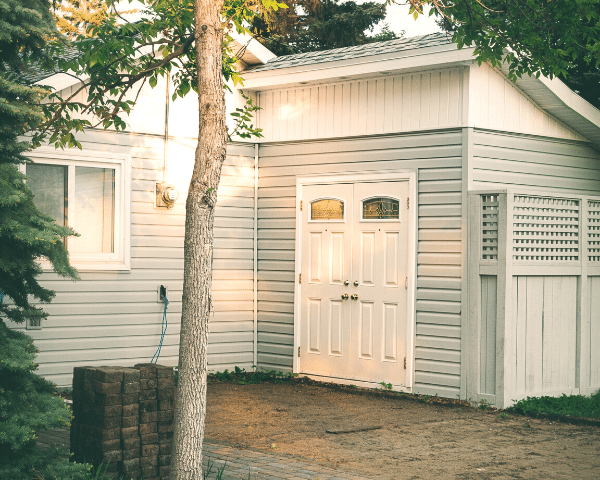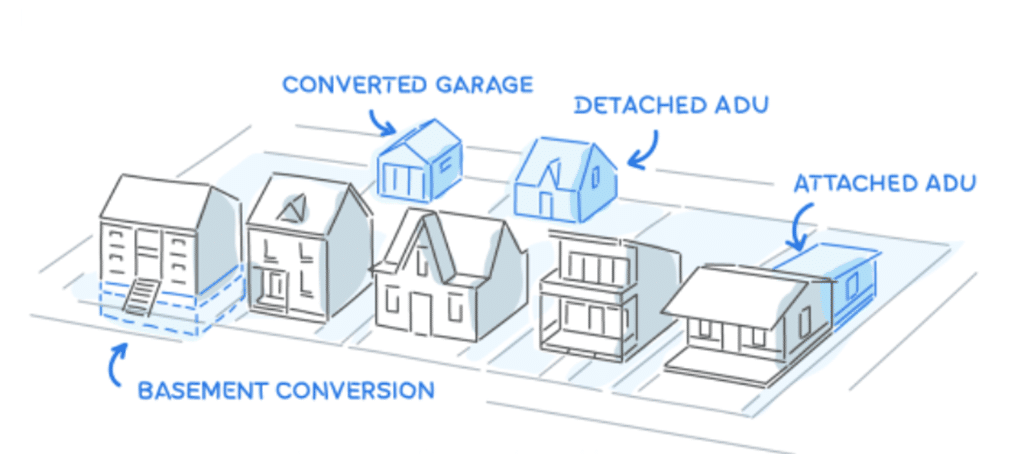
Building an accessory dwelling unit or ADU in California is one of the best investments right now and homeowners should look into maximizing these laws to their fullest potential. But first, let’s take a look at what ADUs are and how homeowners can generate rental income from them.
An ADU (Accessory Dwelling Unit) is like a second tiny house on your property. Its other names are granny flats, in-law units, backyard cottages, secondary units, and more. It has complete independent living facilities for one or more persons and has a few variations:
- Detached: The unit is separated from the primary structure.
- Attached: The unit is attached to the primary structure.
- Converted Existing Space: Space (e.g., master bedroom, attached garage, storage area, or similar use, or an accessory structure) on the lot of the primary residence that is converted into an independent living unit.
- Junior Accessory Dwelling Unit (JADU): Or sometimes referred to as a converted garage, is a specific type of conversion of existing space that is contained entirely within an existing or proposed single-family residence. Can only be a maximum of 500 square feet.
ADUs tend to be significantly less expensive to build and offer benefits that address common development barriers such as affordability and environmental quality. Because ADUs must be built on lots with existing or proposed housing, they do not require paying for new land, dedicated parking, or other costly infrastructure required to build a new single-family home.
Here are some important notes in the updated ADU Law 2020:
- ADU Law is now applicable to ALL California counties.
- You can add two (2) ADUs to a single property. One has to be Detached and one JADU.
- You can now build a detached ADU up to 800 square feet and 16 feet tall without additional discretionary approval.
- ADUs created by conversion are granted automatic approval.
- There are no additional parking requirements.
- Setbacks are reduced to 4 feet for the rear and side yard.
- ADUs do not have to be occupied by the owner until 2025. This is not applicable to JADUs.
- There are no impact fees for ADUs under 750 square feet.
- Approval periods are cut short to 60 days (used to be 120 days).
- HOAs cannot prohibit ADUs.
- Non-permitted ADUs built before 2020 are now allowed a 5 year grace period to be brought up to code.
What are the benefits of ADUs?
- It is an affordable type of home to construct in California because they do not require paying for land, major new infrastructure, structured parking, or elevators.
- Can provide a source of income for homeowners.
- More cost-effective because of wood frame construction, which is significantly less costly than standard homes.
- Extended families are allowed to be near one another while maintaining privacy.
- Gives homeowners the flexibility to share independent living areas with family members and others, allowing seniors to age in place as they require more care.
- Adds housing stock and helps solve the state’s housing challenges.
If you are a homeowner and would like to consider renting an ADU in San Diego county, feel free to reach out to us. You may also refer to the California Department of Housing and Community Development website for additional information.
Source: California Department of Housing and Community Development





